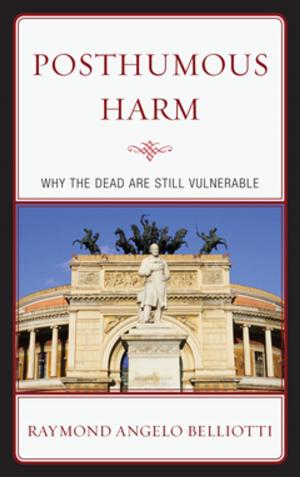| Author: | Bette W. Oliver | ISBN: | 9780739174425 |
| Publisher: | Lexington Books | Publication: | June 10, 2013 |
| Imprint: | Lexington Books | Language: | English |
| Author: | Bette W. Oliver |
| ISBN: | 9780739174425 |
| Publisher: | Lexington Books |
| Publication: | June 10, 2013 |
| Imprint: | Lexington Books |
| Language: | English |
The unleashing of the French Revolution in 1789 resulted in the acceleration of time coupled with an inability to predict what might happen next. As unprecedented events outpaced the days, those caught up in the whirlwind had little time to make judicious decisions about which course of action to follow. The lack of reliable information and delays in communication between Paris and the provinces only exacerbated the situation. Consequently, some fled into exile in Europe and the United States, while others remained to take advantage of new opportunities provided by the revolutionary government. Between 1789 and 1794, the government moved from a position of hopeful cooperation to one of desperate measures instigated during the Terror of 1793–1794. As a result, those French citizens who had fled early in the revolution, including many aristocrats and the king's brothers, as well as the artist Elisabeth Vigee-LeBrun, could not return until many years later, while those who had remained, such as Vigée-LeBrun’s husband, the art dealer Jean-Baptiste Pierre LeBrun, as well as the artist Jacques-Louis David, the writers Sébastien Chamfort and André Chénier, and expelled Girondin deputies, chose survival strategies that they hoped would be successful. For all those concerned, timing was key to survival, and those who lived found that they had crossed a bridge between the Ancien Régime and the beginning of the modern world. It would not be possible to grasp the full import of the period between 1789 and 1795 until time had decelerated to a more reasonable level after the fall of Robespierre in 1794. Yet few could have then imagined that almost one hundred years would pass before a stable French republic would be established.
The unleashing of the French Revolution in 1789 resulted in the acceleration of time coupled with an inability to predict what might happen next. As unprecedented events outpaced the days, those caught up in the whirlwind had little time to make judicious decisions about which course of action to follow. The lack of reliable information and delays in communication between Paris and the provinces only exacerbated the situation. Consequently, some fled into exile in Europe and the United States, while others remained to take advantage of new opportunities provided by the revolutionary government. Between 1789 and 1794, the government moved from a position of hopeful cooperation to one of desperate measures instigated during the Terror of 1793–1794. As a result, those French citizens who had fled early in the revolution, including many aristocrats and the king's brothers, as well as the artist Elisabeth Vigee-LeBrun, could not return until many years later, while those who had remained, such as Vigée-LeBrun’s husband, the art dealer Jean-Baptiste Pierre LeBrun, as well as the artist Jacques-Louis David, the writers Sébastien Chamfort and André Chénier, and expelled Girondin deputies, chose survival strategies that they hoped would be successful. For all those concerned, timing was key to survival, and those who lived found that they had crossed a bridge between the Ancien Régime and the beginning of the modern world. It would not be possible to grasp the full import of the period between 1789 and 1795 until time had decelerated to a more reasonable level after the fall of Robespierre in 1794. Yet few could have then imagined that almost one hundred years would pass before a stable French republic would be established.















